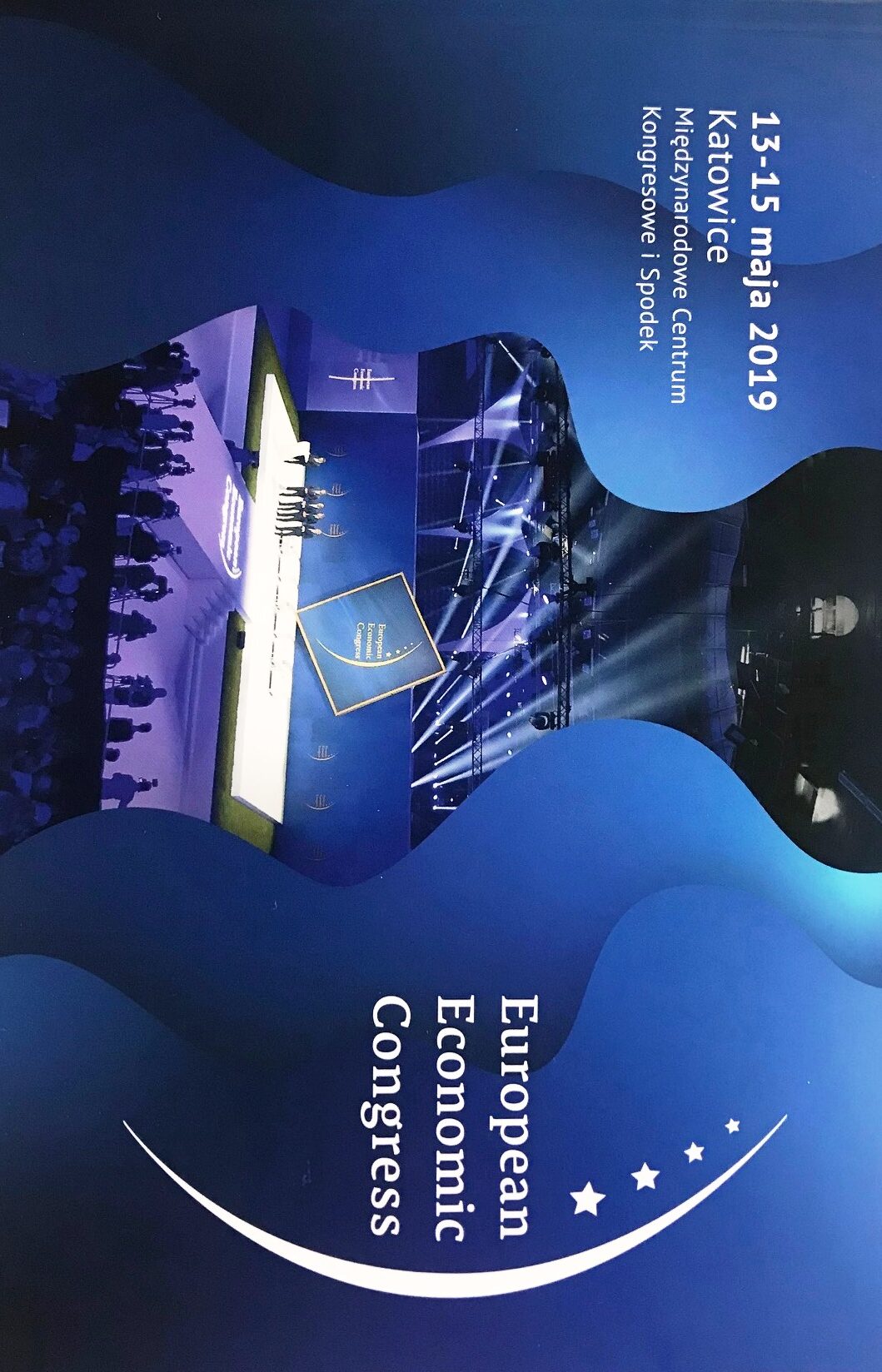The Present and Future of OOH: Discussions at EKG in Katowice

On May 15, 2019, during the European Economic Congress in Katowice, a discussion took place as part of the "Smart City - Better Space" panel. The panel was organized by the Chamber of Commerce for Outdoor Advertising.
The discussion, moderated by Aleksandra Dziadykiewicz, an economic journalist from TOK FM radio, included CEOs of outdoor advertising companies: Michał Ciundziewicki (Jet Line), Marek Kuzaka (AMS), Marcin Ochmański (Warexpo), Krzysztof Wilgus (Business Consulting), as well as Warsaw City Secretary Marcin Wojdat and Wojciech Zaskórski, Enterprise Business Division Director at Samsung Electronics Poland.
The discussion covered the following topics:
- Outdoor advertising in the modern city. Strategies and stereotypes.
• Traditional and modern advertising media and their optimal use.
• New technologies in information and advertising in urban space. Non-standard methods of reaching the audience.
• The future of outdoor advertising as part of urban space.
In her opening remarks, Aleksandra Dziadykiewicz noted that outdoor advertising has a bad reputation, with claims that it clutters space, has low social acceptance, and its share in advertising spending is declining. Meanwhile, the world is entering the era of Economy 4.0, everything is becoming digital, smartphones are in common use, and generations Y and Z are gaining influence. Sustainable development and diversity are prioritized over purely business goals, understood as ends in themselves.
So can outdoor advertising, with its paper and glue, play any role in this reality?
In response, Marek Kuzaka (AMS) explained what outdoor 4.0 is and how outdoor is understood in Economy 4.0.
The OOH industry, like any other, needs to change and move into the 21st century. This applies to both technological issues and adaptation to modern marketing requirements. Questions were raised: is innovation in the context of OOH more like a vision from >>Minority Report<< or rather from the film >>Three Billboards Outside Ebbing, Missouri<<?
Is it just about using technology to change how content is delivered, or should the change be much deeper?
Marcin Wojdat (City of Warsaw) discussed the role of city managers in shaping public space, including achieving advertising order. He cited research showing that residents are “overstimulated” and what they desire is peace and order. The quality of public space affects the quality of life in cities. The key to improving it is understanding that public space is truly shared and cannot be appropriated by anyone.
"I'm not against outdoor advertising, but I believe moderation is necessary," he emphasized.
Marcin Ochmański (Warexpo) pointed out that systematic, commercial city information helps limit non-systematic advertising while giving entrepreneurs a chance to exist in public space. Advertising should be better integrated into urban space, not dominate it, and be an element of the city's aesthetics and spatial order. For the city, OOH advertising media are as important a communication channel with residents as other media: "Outdoor advertising is the most democratic medium. It reaches everyone and doesn't digitally exclude anyone."
Wojciech Zaskórski (Samsung Electronics) presented a vision for the development of technologies used in OOH. "Visual communication supported by technology can revolutionize what happens in urban space, just as Facebook revolutionized interpersonal relationships." Technology enables completely new actions, outdoor becomes a content medium. It adapts to the context of place and time, enabling interaction with the audience. At the same time, digitalization creates completely new challenges. These concern both data security and effective data processing and use. OOH companies will soon have access to huge amounts of data. This will enable sharing with decision-makers and various other stakeholders within Smart City infrastructure. According to Wojciech Zaskórski, the future vision of OOH includes screens equipped with gesture and gaze tracking functions, allowing for data estimation: who actually passes by the advertisement and whether they were interested in it.
Krzysztof Wilgus (Business Consulting) showed that advertising can fulfill social functions and activate actions for residents, related to ecology for example. He cited campaign examples such as the anti-smog tram project, the Green Krakow project, and the use of photovoltaics in outdoor advertising.
Michał Ciundziewicki (Jet Line) drew attention to factors determining OOH advertising effectiveness. For advertising to be effective, the right information should reach the right person at the right place and time. The main reason we say "I don't like advertising" is that it's irrelevant to our interests, there's too much of it, or it's poorly designed. An important element in thinking about outdoor advertising is creation. "It's not that we don't like ads, it's very often that they are poorly designed. Each of us has witnessed many campaigns where hundreds of thousands of zlotys are wasted just because the poster is illegible and people don't understand what it's about."
Technology is changing, and strategy and creation should adapt to these changes as well. Traditional outdoor advertising, which we remember from the 90s, mainly consisted of image campaigns. Today, besides building image, we aim to activate the recipient, invite them to contact, to conversation. That's why we now combine OOH with DOOH, classic outdoor with digital, offline with online.
In the photo from left: Michał Ciundziewicki, Marek Kuzaka, Marcin Ochmański, Krzysztof Wilgus, Marcin Wojdat (out of frame Wojciech Zaskórski and Aleksandra Dziadykiewicz).
Photo: Lech Kaczoń, IGRZ.

